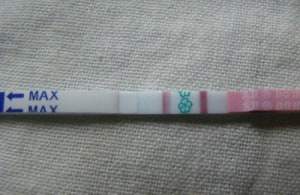Check your ovulation is very important if you want to conceive naturally. by checking your ovulation, you know whether you ovulate, and when you ovulate.
Table of Centents
When women ovulate, subtle changes may occur in the body both physically and psychologically. By observing the signs and symptoms, you may know whether you ovulate and when you ovulate.
As we know the best and most accurate way to check ovulation is blood testing and ultrasound. Your doctor may give you a blood testing for raising progesterone after ovulation. Transvaginal Ultrasound is the most accurate way to check whether you ovulate or not. However it’s not always convenient to have blood test and ultrasound every cycle. It will be much easier to check ovulation at home.
So, how to test ovulation naturally at home?
Listed 6 ways to check or test you ovulation naturally at home
1. Check your ovulation by counting menstrual cycle:

check ovulation
Ovulation usually happens two weeks before your period starts. If you have a regular 28 days’ cycle, you may ovulate on day 14. If you only have a 21 days cycle, you may ovulate on day 7 – right just after you finish bleeding!
2. Check your Basal Body Temperature (BBT)
Basal Body Temperature (BBT) is the temperature when you are in fully rest. BBT is sensitive to hormone change, especially after ovulation the progesterone increase your BBT 0.3 ~0.5 degrees.
Although BBT doesn’t predict your ovulation, it is a great tool to check whether you ovulate or not. And it is a great tool to check whether you have good quality ovulation or not. Here is how to check your BBT.
3. Check cervical mucus
Before and during ovulation, you may have more clear and stretching mucus – the egg white like fertile mucus. Fertile mucus change the environment of vagina and cervix. It provide an optimal environment for sperm to swim and survive. Therefore make it ready for fertilisation. Fertile mucus usually present from 2 to 5 days.
4. Saliva Ferning Test:
Saliva-based kits analyse dried saliva under a microscope. During ovulation, eastrogen levels rise, causing a fern-like pattern in dried saliva.
5. Ovulation Predictor Kits (OPKs):
These kits detect the surge in luteinising hormone (LH) in your urine, indicating that ovulation is likely to occur within the next 24-36 hours.

Ovulation kit
6. Chart record other changes or symptoms during ovulation:
Feels have more energy, more feminine, and more confident in yourself; You may notice increased libido before and during ovulation period.
-
Ovulation pain
Some people may have slightly discomfort or pain at either side of lower abdomen. The pain is a dull or stitching, sharp pain.
-
Ovulation bleeding or spotting
Ovulation bleeding or spotting happens due to the sudden withdrawal of oestrogen at the time of ovulation.
If you know that you are ovulating, having sexual intercourse before and during the time gives you the chance to conceive naturally.
Almond Wellness Centre Clinics
Melbourne Fertility Acupuncture Chinese Medicine clinic has the expertise for fertility, IVF support and women’s health, should you have any questions please feel free to contact us or call us to make an appointment.
